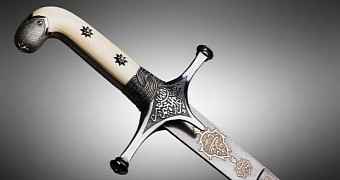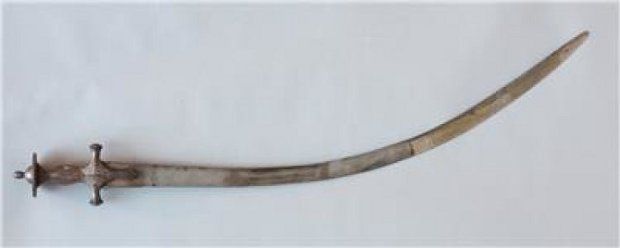Apart from being lethal objects, which is why they were designed and created to begin with, swords are proof that there is more to craftsmanship than just making the absolute perfect beer jug or the prettiest mahogany table that ever was.
This is what a team of scientists working with research facilities in Italy and in the UK learned when given the chance to closely study a sword that was forged several centuries back and whose design appears to be of Persian origin.
Using modern technologies to study a centuries-old sword
The positively gorgeous sword that specialists got to examine, featured in the photo below, was forged sometime in the late 18th or the 19th century in India. It is now on display at the Wallace Collection, a museum in London, UK.
Looking to gain a better understanding of how this sword was made and what materials were used to forge it, researchers collected samples from its damaged sections and analyzed them with the help of powerful microscopes, Science Daily informs.
They also employed so-called neutron diffraction techniques, which means that they fired electrically neutral subatomic particles dubbed neutrons at it and looked at how they interacted with its blade. This allowed them to study the atomic and the magnetic structure of the material used to forge the sword.
The reason the researchers decided to use these high-tech techniques to study the sword rather than just smash it and have a closer look at its anatomy was that they did not want to damage it in any way while trying to make sense of how exactly it was made.
“Because it is unthinkable to apply techniques with a destructive approach, neutron diffraction techniques provide an ideal solution to characterize archaeological specimens made from metal when we cannot or do not want to sample the object,” explains specialist Eliza Barzagli.
The sword is seriously cool, made of almost pure steel
As detailed in a paper in the journal Applied Physics, the weapon measures an impressive 75 centimeters (almost 30 inches) from one end to the other. It is curved and just one of its edges is sharpened. Historians say that swords of this kind, first made in Persia, are known as shamsheers.
What's interesting is that whoever made it used almost pure steel. Specifically, the sword was forged from wootz steel, which is a type of steel whose structure displays a band-like pattern. According to historical records, this type of steel was quite popular in Central Asia centuries back.
Specialists say that, by choosing wootz steel, the person who made the sword would have been able to forge it at low temperatures and even let it cool in the air rather than submerge it into some liquid. Despite this treatment, the sword remained strong and sturdy enough to be used in battle.

 14 DAY TRIAL //
14 DAY TRIAL // 

